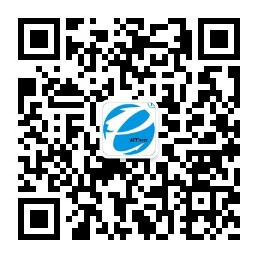ASTMD149美標(biāo)標(biāo)準(zhǔn)固體絕緣材料電壓擊穿的實驗方法(一)
Standard Test Method for Dielectric Breakdown Voltage and Dielectric Strength of Solid Electrical Insulating Materials at Commercial Power Frequencies 固體電絕緣材料在工業(yè)用電頻率下的電壓擊穿和介電強(qiáng)度
Standard Test Method for Dielectric Breakdown Voltage and Dielectric Strength of Solid Electrical Insulating Materials at Commercial Power Frequencies 固體電絕緣材料在工業(yè)用電頻率下的電壓擊穿和介電強(qiáng)度的實驗方法
1. Scope*
1.1 This test method covers procedures for the determination of dielectric strength of solid insulating materials at commercial power frequencies, under specified conditions.2,3
1.2 Unless otherwise specified, the tests shall be made at 60Hz. However, this test method is suitable for use at anyfrequency from 25 to 800 Hz. At frequencies above 800 Hz,dielectric heating is a potential problem.
1.3 This test method is intended to be used in conjunction with any ASTM standard or other document that refers to this test method. References to this document need to specify the particular options to be used (see 5.5).
1.4 It is suitable for use at various temperatures, and in any suitable gaseous or liquid surrounding medium.
1.5 This test method is not intended for measuring the dielectric strength of materials that are fluid under the conditions of test.
1.6 This test method is not intended for use in determining intrinsic dielectric strength,direct-voltage dielectric strength,or thermal failure under electrical stress (see Test MethodD3151).
1.7 This test method is most commonly used to determine the dielectric breakdown voltage through the thickness of a test specimen (puncture). It is also suitable for use to determine dielectric breakdown voltage along the interface between a solid specimen and a gaseous or liquid surrounding medium (flashover). With the addition of instructions modifying Section 12, this test method is also suitable for use for proof testing.
1.8 This test method is similar to IEC Publication 243-1. All procedures in this method are included in IEC 243-1. Differences between this method and IEC 243-1 are largely editorial.
1.9 This standard does not purport to address all of the safety concerns, if any, associated with its use. It is the responsibility of the user of this standard to establish appropriate safety and health practices and determine the applicability of regulatory limitations prior to use. Specific hazardstatements are given in Section 7. Also see 6.4.1.
相關(guān)產(chǎn)品
免責(zé)聲明
- 凡本網(wǎng)注明“來源:化工儀器網(wǎng)”的所有作品,,均為浙江興旺寶明通網(wǎng)絡(luò)有限公司-化工儀器網(wǎng)合法擁有版權(quán)或有權(quán)使用的作品,未經(jīng)本網(wǎng)授權(quán)不得轉(zhuǎn)載,、摘編或利用其它方式使用上述作品,。已經(jīng)本網(wǎng)授權(quán)使用作品的,應(yīng)在授權(quán)范圍內(nèi)使用,,并注明“來源:化工儀器網(wǎng)”,。違反上述聲明者,本網(wǎng)將追究其相關(guān)法律責(zé)任,。
- 本網(wǎng)轉(zhuǎn)載并注明自其他來源(非化工儀器網(wǎng))的作品,,目的在于傳遞更多信息,并不代表本網(wǎng)贊同其觀點和對其真實性負(fù)責(zé),,不承擔(dān)此類作品侵權(quán)行為的直接責(zé)任及連帶責(zé)任,。其他媒體、網(wǎng)站或個人從本網(wǎng)轉(zhuǎn)載時,,必須保留本網(wǎng)注明的作品第一來源,,并自負(fù)版權(quán)等法律責(zé)任,。
- 如涉及作品內(nèi)容、版權(quán)等問題,,請在作品發(fā)表之日起一周內(nèi)與本網(wǎng)聯(lián)系,,否則視為放棄相關(guān)權(quán)利。
 手機(jī)版
手機(jī)版 化工儀器網(wǎng)手機(jī)版
化工儀器網(wǎng)手機(jī)版
 化工儀器網(wǎng)小程序
化工儀器網(wǎng)小程序
 官方微信
官方微信 公眾號:chem17
公眾號:chem17
 掃碼關(guān)注視頻號
掃碼關(guān)注視頻號



















 采購中心
采購中心